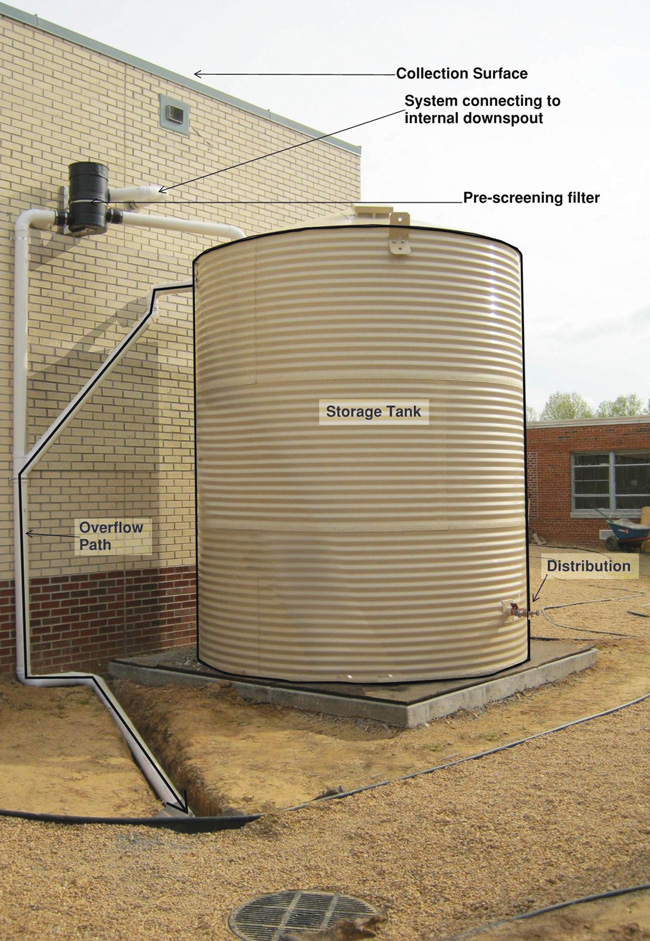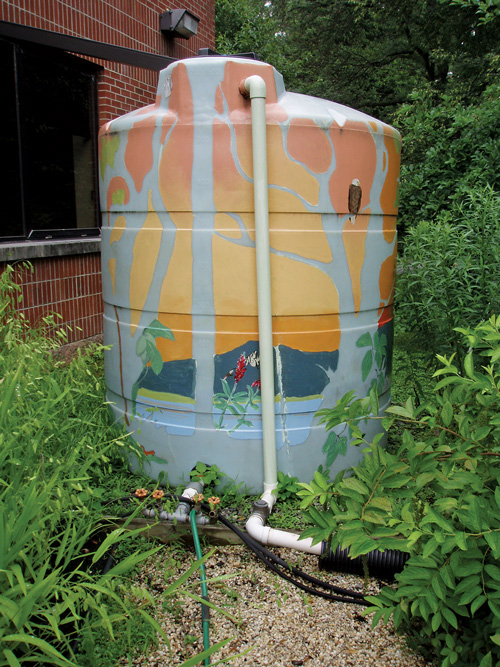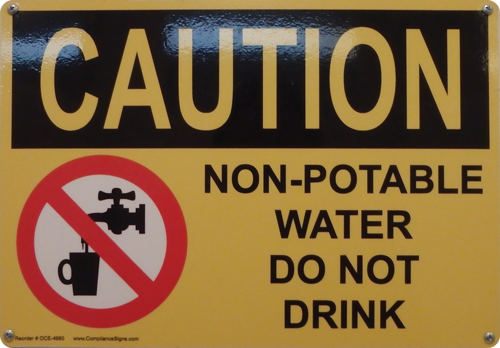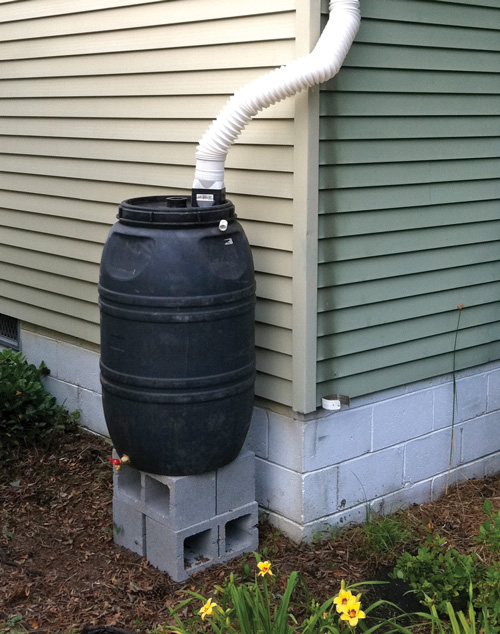
Protecting our environment, one stormwater practice at a time.
Rainwater Harvesting
Overview
Capturing excess rainwater to be used in the future is an effective way to manage stormwater. A rainwater harvesting system (RWHS) is a practice where rainwater that falls on a collection surface is conveyed into an above or below ground storage tank for later use. There are many different types of systems available; the size, complexity, material and location of the RWHS will be based on the source and volume of stormwater runoff to be captured and how the water is to be used.
How Rainwater Harvesting Practices Work
 Rainwater harvesting captures, diverts and stores rainwater for later use. There are six primary components of a RWHS:
Rainwater harvesting captures, diverts and stores rainwater for later use. There are six primary components of a RWHS:
- Collection surface, such as a roof or parking lot
- Collection and conveyance system, such as a gutter and downspout
- Pre-screening and first flush diverter
- Storage tank
- Distribution or outflow system
- Overflow, filter path or secondary runoff reduction practice
An aboveground RWHS should be UV and impact resistant. The picture to the right is an example of an aboveground RWHS, called a cistern. Water is usually gravity-fed to the distribution or outflow system, but a pump may be installed if needed.
There are many options for underground storage tanks. All underground RWHS must be designed to support the overlaying surface and any other anticipated loads, such as vehicles and pedestrians. The tanks can be made of many materials and configured in various shapes, depending on the type used and the site conditions where the tanks will be installed. The harvesting system should be equipped with an appropriately sized pump that produces sufficient pressure for all end-users. An underground RWHS is a great option when space is limited aboveground.
All RWHS require an emergency overflow system to convey extra water when the facility is full. Storage tanks may be used in series where one emergency overflow is sent to another tank.

Left photo courtesy of the Virginia Rainwater Harvesting Manual, The Cabell Brand Center. Right photo courtesy of Rainwater Management Solutions.
 Once water has been collected, it can be used in a variety of ways. Uses may range from irrigation, vehicle washing, commercial cooling systems and as a source of non-potable water. Rainwater harvesting also conserves potable water for human consumption.
Once water has been collected, it can be used in a variety of ways. Uses may range from irrigation, vehicle washing, commercial cooling systems and as a source of non-potable water. Rainwater harvesting also conserves potable water for human consumption.

The Virginia Department of Conservation and Recreation regulates the reclamation and reuse of stormwater in accordance with the Virginia Stormwater Management Program Permit Regulations, 4VAC50-60-10 et seq.
How to Maintain a Rainwater Harvesting Practice
- Routinely inspect and repair deficiencies of structural components and connections of the RWHS including tank, pump and pipes
- An aboveground RWHS should be emptied prior to storm events, when possible, and disconnected before winter
- Gutters and downspouts should be checked twice per year to ensure they are free of leaves and other debris
- Inspect and clean pre-screening devices and first flush diverters four times a year
- The condition of overflow pipes, overflow filter paths and/or secondary runoff reduction practices should be inspected yearly
- The rainwater should not be used for irrigation if the roof has been treated for moss
 FairFacts
FairFacts
- Harvesting rainwater is a global practice that is thousands of years old. The ancient Romans became experts at constructing reservoirs and collecting rainwater.
- A rain barrel is a small, aboveground cistern with a storage capacity of 40 to 50 gallons. These are commonly installed on residential properties. The Northern Virginia Soil and Water Conservation District hosts several rain barrel workshops throughout the year where residents can make their own rain barrel. See https://www.fairfaxcounty.gov/soil-water-conservation/rain-barrel for more information.
The information in this fact sheet is general in nature and is not intended to determine maintenance responsibility.
For more information, contact:
Department of Public Works and Environmental Services, Maintenance and Stormwater Management Division
10635 West Drive, Fairfax, VA 22030
703-877-2800, TTY 711
ContactMSMD@fairfaxcounty.gov

